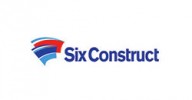
i
Sakshham Consultants
Filter interviews by
Sakshham Consultants Project Engineer Interview Questions and Answers
Sakshham Consultants Project Engineer Interview Experiences
1 interview found
I applied via Referral and was interviewed in Feb 2022. There were 2 interview rounds.

(1 Question)
- Q1. Regarding Basic Activities of Civil like Backfilling, Project Scheduling, Steel Consupmtion of site, etc
Interview Preparation Tips
Top trending discussions






Interview questions from similar companies

Project Manager Interview Questions & Answers
Kaushal Interiors Private Limitedposted on 6 Dec 2023
I applied via Recruitment Consulltant and was interviewed in Nov 2023. There were 3 interview rounds.

(1 Question)
- Q1. Previous job roles
- Ans.
I have held various project management roles in the past, overseeing the successful completion of multiple projects.
Managed cross-functional teams to deliver projects on time and within budget
Developed project plans, schedules, and budgets
Identified and mitigated project risks
Communicated project status updates to stakeholders
Ensured project deliverables met quality standards
(1 Question)
- Q1. Installation of interior fitout in a specific space.
- Ans.
The installation of interior fitout in a specific space involves the process of transforming an empty area into a functional and aesthetically pleasing environment.
Understanding the client's requirements and design specifications
Creating a detailed project plan and timeline
Coordinating with architects, designers, contractors, and suppliers
Managing the procurement and delivery of materials and equipment
Supervising the i...

Project Engineer Interview Questions & Answers
Kaushal Interiors Private Limitedposted on 25 Jun 2022
I applied via Referral and was interviewed before Jun 2021. There were 2 interview rounds.
(3 Questions)
- Q1. Give a brief introduction about yourself
- Q2. Explain roles and responsibilities in detail
- Q3. Explain about software skills.
- Ans.
Software skills refer to the ability to use various software tools and applications effectively.
Proficiency in programming languages such as Java, Python, C++
Familiarity with software development methodologies such as Agile, Waterfall
Experience with software testing and debugging
Knowledge of database management systems like MySQL, Oracle
Ability to use software tools like Git, JIRA, Visual Studio
Understanding of web dev
(3 Questions)
- Q1. Technical questions about inter fits outs
- Q2. Type of projects handled. Explain about the challenges and how you overcame them
- Q3. Strengths and weakness as project engineer
Interview Preparation Tips
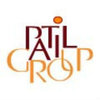
I appeared for an interview before Feb 2024.
(10 Questions)
- Q1. What are the seven quality control tools, and can you provide explanations for each?
- Ans.
The seven quality control tools are essential for process improvement and problem-solving in engineering.
Check sheet: Used to collect and analyze data in a systematic way, such as tracking defects in a manufacturing process.
Pareto chart: Helps identify the most significant factors contributing to a problem by displaying them in descending order of frequency or impact.
Cause-and-effect diagram (Fishbone diagram): Visuali...
- Q2. 5S and visual management
- Q3. What are the seven steps of autonomous maintenance?
- Ans.
Autonomous maintenance is a key pillar of Total Productive Maintenance (TPM) and involves seven steps to empower operators to take care of their equipment.
Step 1: Initial Cleaning - Operators clean the equipment and surrounding area to identify abnormalities.
Step 2: Eliminate Sources of Contamination - Remove dirt, dust, and debris that can lead to breakdowns.
Step 3: General Inspection - Operators visually inspect the ...
- Q4. What are the calculations involved in Overall Equipment Effectiveness (OEE)?
- Ans.
OEE calculations involve Availability, Performance, and Quality factors to measure equipment efficiency.
Calculate Availability by dividing Operating Time by Planned Production Time.
Calculate Performance by dividing Actual Production by Maximum Possible Production.
Calculate Quality by dividing Good Units Produced by Total Units Started.
- Q5. Why is it mandatory for an organization to implement lean practices?
- Ans.
Implementing lean practices is mandatory for organizations to improve efficiency, reduce waste, and increase productivity.
Lean practices help organizations identify and eliminate waste in processes, leading to cost savings and improved efficiency.
By implementing lean practices, organizations can improve quality control and reduce defects in products or services.
Lean practices promote continuous improvement and empower ...
- Q6. How can downstream team members be motivated?
- Ans.
Downstream team members can be motivated through recognition, clear communication, opportunities for growth, and fostering a positive work environment.
Provide recognition for their hard work and achievements
Communicate clearly about goals, expectations, and feedback
Offer opportunities for growth and development, such as training or mentorship programs
Create a positive work environment through team-building activities a
- Q7. What is Pareto analysis and how is it applied in decision-making processes?
- Ans.
Pareto analysis is a technique used to identify the most important factors contributing to a problem or situation.
Pareto analysis is based on the Pareto Principle, also known as the 80/20 rule, which states that roughly 80% of effects come from 20% of causes.
It involves identifying and prioritizing the factors that have the most significant impact on a particular outcome.
By focusing on addressing the most critical fact...
- Q8. What is a Gemba walk, and how is it performed?
- Ans.
A Gemba walk is a Lean management technique where managers go to the actual workplace to observe operations and engage with employees.
Gemba walks involve observing processes, asking questions, and identifying opportunities for improvement.
Managers should focus on understanding the work being done and the challenges faced by employees.
Gemba walks help in building relationships with employees and fostering a culture of c...
- Q9. What are the steps involved in performing safety risk assessments?
- Ans.
Steps involved in performing safety risk assessments
Identify hazards and potential risks
Assess the likelihood and severity of each risk
Implement control measures to mitigate risks
Monitor and review the effectiveness of control measures
Document findings and recommendations
Communicate risks to relevant stakeholders
- Q10. Explain about TPM
- Ans.
TPM stands for Total Productive Maintenance, a proactive approach to maintenance that aims to maximize equipment effectiveness.
TPM focuses on preventing equipment breakdowns through regular maintenance and employee involvement.
It involves autonomous maintenance, planned maintenance, and focused improvement activities.
TPM aims to improve overall equipment effectiveness (OEE) by reducing downtime, improving quality, and ...

(2 Questions)
- Q1. What is quality
- Ans.
Quality is the measure of excellence or superiority of a product or service.
Quality is meeting or exceeding customer expectations.
It involves consistency, reliability, and conformance to requirements.
Quality can be measured through metrics such as defect rates, customer satisfaction, and on-time delivery.
Continuous improvement is essential for maintaining and enhancing quality.
Examples of quality include a durable smar...
- Q2. Gd&t
Interview Preparation Tips
lage raho
kam karte raho

Billing Engineer Interview Questions & Answers
Kaushal Interiors Private Limitedposted on 19 Jul 2023
I applied via Naukri.com and was interviewed in Jan 2023. There were 3 interview rounds.

(1 Question)
- Q1. Just previous job work
(2 Questions)
- Q1. Afew technical question
- Q2. Commercial or residential projects in Which I Had worked?
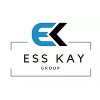
I applied via Approached by Company and was interviewed before Dec 2022. There were 2 interview rounds.
(2 Questions)
- Q1. Copper Id check
- Q2. Copper thikness
(3 Questions)
- Q1. Vernior liscount
- Q2. What is copper tolerance
- Ans.
Copper tolerance refers to the ability of a material to withstand exposure to copper without degrading.
Copper tolerance is important in industries where copper is commonly used, such as electronics and plumbing.
Materials with high copper tolerance are less likely to corrode or degrade when in contact with copper.
Testing for copper tolerance involves exposing the material to copper and monitoring any changes in its prop...
- Q3. 12 mm tube thikness check
Interview Preparation Tips

They are as a friendly asked questions what you did past service as before organization.
(1 Question)
- Q1. Asked simple technical questions, related to your experience s .
Interview Preparation Tips
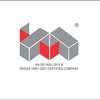
Junior Engineer Interview Questions & Answers
Millennium Engineers & Contractorsposted on 13 Oct 2023

(1 Question)
- Q1. Concrete grade, cement testing
(1 Question)
- Q1. Salary discussions

Site Engineer Interview Questions & Answers
Millennium Engineers & Contractorsposted on 1 Mar 2024
I applied via Walk-in and was interviewed before Mar 2023. There were 3 interview rounds.
(1 Question)
- Q1. General work experience, background checks and flexibility to work on multiple locations
They have a test paper that you have to fill before meeting MD in final round
(1 Question)
- Q1. When can you join?
Interview Preparation Tips
Sakshham Consultants Interview FAQs
Tell us how to improve this page.
Interview Questions for Popular Designations
- Project Manager Interview Questions
- Project Coordinator Interview Questions
- Project Lead Interview Questions
- Project Associate Interview Questions
- Senior Project Manager Interview Questions
- Senior Project Engineer Interview Questions
- Assistant Project Manager Interview Questions
- Project Engineer - Civil Interview Questions
- Show more
Interview Questions from Similar Companies
Sakshham Consultants Project Engineer Reviews and Ratings
based on 4 reviews
Rating in categories
|
Project Manager
10
salaries
| ₹6.2 L/yr - ₹9.4 L/yr |
|
Project Engineer
8
salaries
| ₹3.6 L/yr - ₹7 L/yr |
|
Assistant Project Manager
4
salaries
| ₹4.1 L/yr - ₹5.4 L/yr |
|
Planning Engineer
3
salaries
| ₹3.6 L/yr - ₹4.6 L/yr |
|
Project Manager Civil
3
salaries
| ₹6.5 L/yr - ₹10 L/yr |
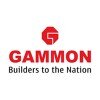
GAMMON INDIA

Patil Group

Millennium Engineers & Contractors

Karam Industries
- Home >
- Interviews >
- Sakshham Consultants Interview Questions >
- Sakshham Consultants Project Engineer Interview Questions



